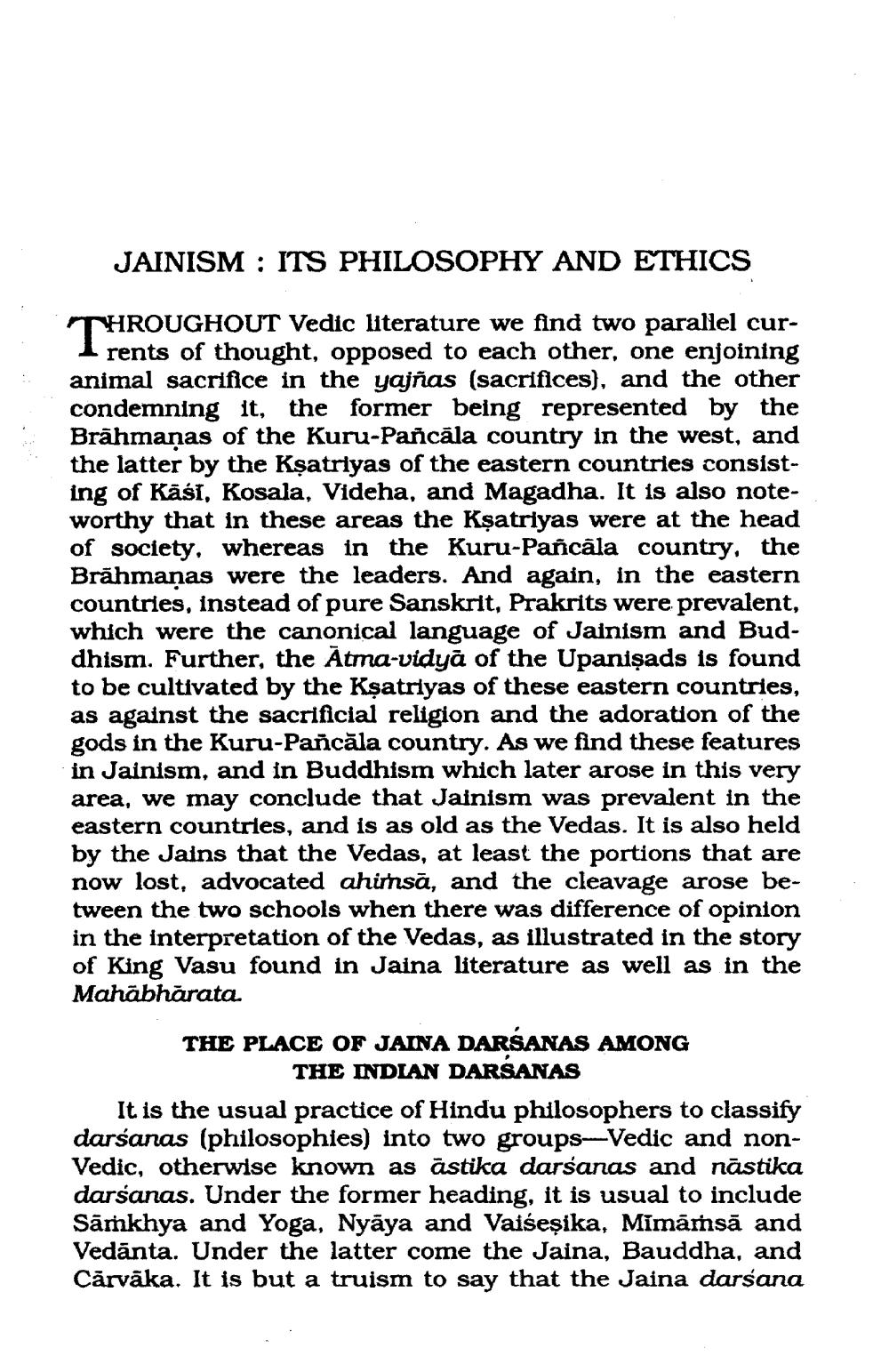________________
JAINISM: ITS PHILOSOPHY AND ETHICS
THROUGHOUT Vedic literature we find two parallel cur
rents of thought, opposed to each other, one enjoining animal sacrifice in the yajñas (sacrifices), and the other condemning it, the former being represented by the Brāhmaṇas of the Kuru-Pañcala country in the west, and the latter by the Kṣatriyas of the eastern countries consisting of Käsi, Kosala, Videha, and Magadha. It is also noteworthy that in these areas the Kṣatriyas were at the head of society, whereas in the Kuru-Pañcala country, the Brāhmaṇas were the leaders. And again, in the eastern countries, instead of pure Sanskrit, Prakrits were prevalent, which were the canonical language of Jainism and Buddhism. Further, the Atma-vidya of the Upaniṣads is found to be cultivated by the Ksatriyas of these eastern countries, as against the sacrificial religion and the adoration of the gods in the Kuru-Pañcăla country. As we find these features in Jainism, and in Buddhism which later arose in this very area, we may conclude that Jainism was prevalent in the eastern countries, and is as old as the Vedas. It is also held by the Jains that the Vedas, at least the portions that are now lost, advocated ahimsa, and the cleavage arose between the two schools when there was difference of opinion in the interpretation of the Vedas, as illustrated in the story of King Vasu found in Jaina literature as well as in the Mahabharata.
THE PLACE OF JAINA DARSANAS AMONG THE INDIAN DARSANAS
It is the usual practice of Hindu philosophers to classify darsanas (philosophies) into two groups-Vedic and nonVedic, otherwise known as ästika darsanas and nastika darsanas. Under the former heading, it is usual to include Samkhya and Yoga, Nyaya and Vaiseṣika, Mīmāṁsā and Vedanta. Under the latter come the Jaina, Bauddha, and Cārvāka. It is but a truism to say that the Jaina darsana




